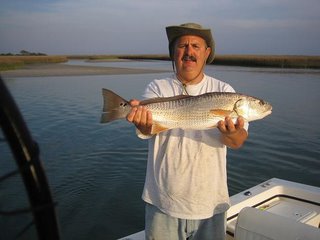Trout fishing in the Nantahala River

Winter weather has set-in across the state, but fish still need to eat. Many leave for warmer waters but some stay here for the winter, fish like specks and red drum. Avid anglers pursue these fish all winter long braving the cold for the enjoyment of the catch.
I took a different tack this past week. I went to a colder climate looking for a fish that thrives in the cold water, not just survives. That of course would be trout, freshwater trout that is.
Growing up on the NC coast I was able to spend part of my summers in and around
Ah, the cool waters on a hot summer day. It seemed logical to me. To go fishing in those cold waters in the middle of winter never crossed my mind. I never thought about how the trout preferred cold water and thus would not become as lethargic in cold water as do their warm water preferring cousins.
On those trips I often would see folks using fly rods. It always looked odd but somewhat intriguing. It seemed kind of scary to me with all that line dangling down at their feet, the long rod slicing back and forth through the air with line whipping around like a snake. Being a clumsy kid who didn’t develop refined motor skills until I was older, I always wondered how in the world they managed not to catch themselves.
Within the first hour, I was not only handling that rod with a bit of confidence, I caught three trout on three casts, a nice brown trout, a brook and a rainbow. They tell me that feat is called a mountain trifecta, along the lines of our inshore slam I suppose.
This time of year I am accustomed to retrieving very slowly and expect a light bite from our specks and drum. I was surprised at how feisty the trout were. They would hit my lure and hold on, first running toward me then heading down stream as fast as they could. Wow. Yup, that says it all.
Looking for some mid-winter action – put on the long underwear and give Daniel a call. You will be in for a treat! Daniel can be reached at 828-479-8850 or through his website.
Catching report
Back in these parts – specks and drum continue to bite in the creeks in deep and on the sandy flats on sunny warmer days. There have been a few reports of the yellowfin tuna action starting up offshore. Grouper and snappers are biting in the 25- 35 mile range Try the artificial reefs from some nice black sea bass and a few keeper flounder.
Tight lines to all!



